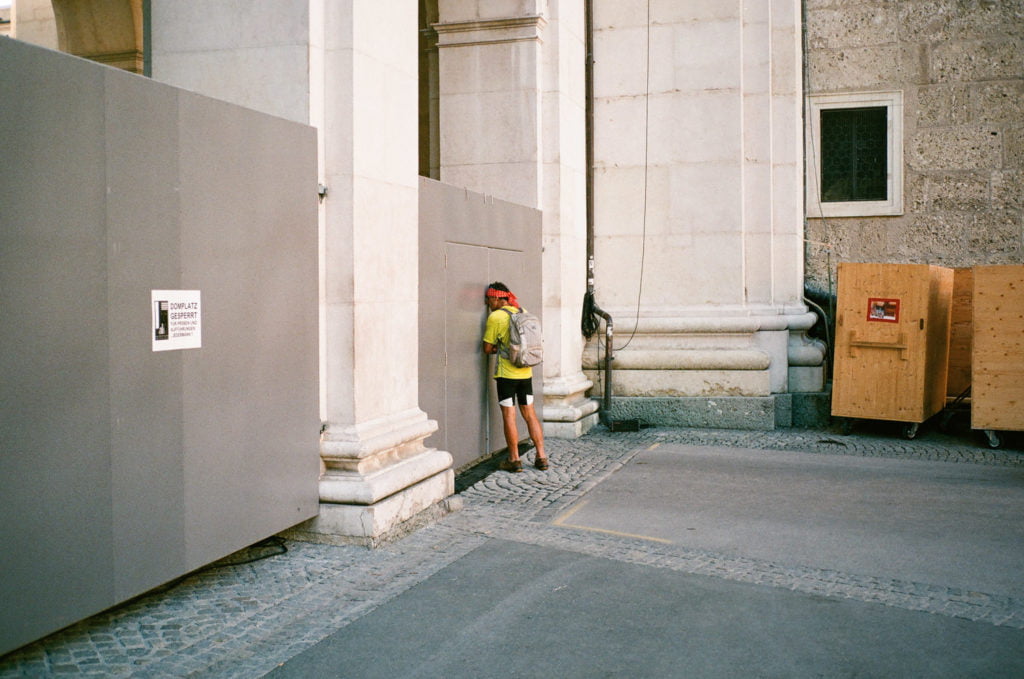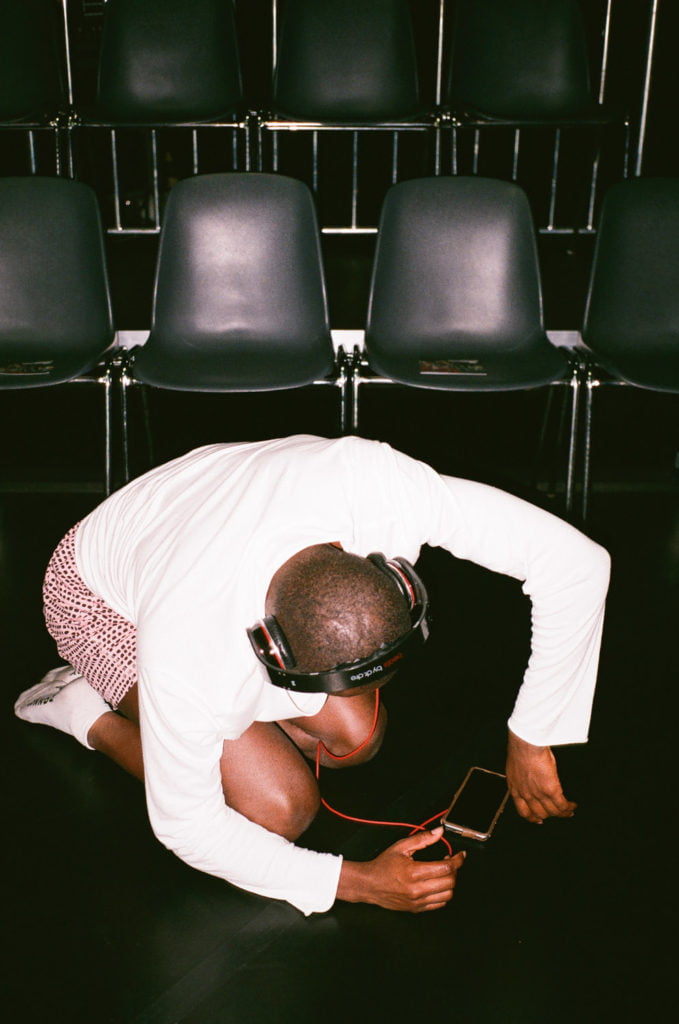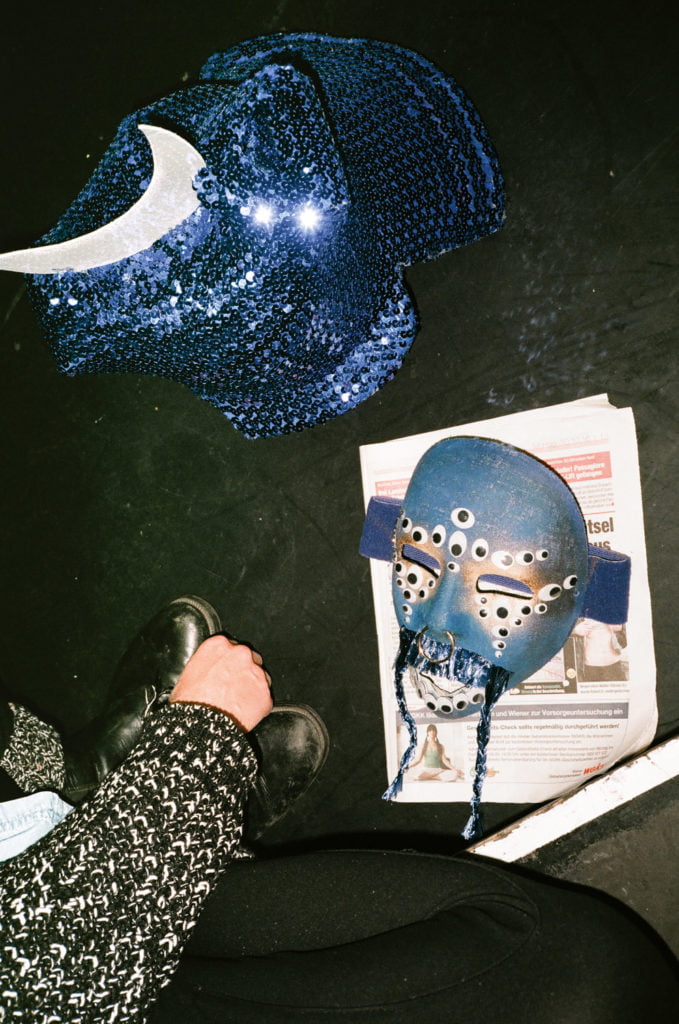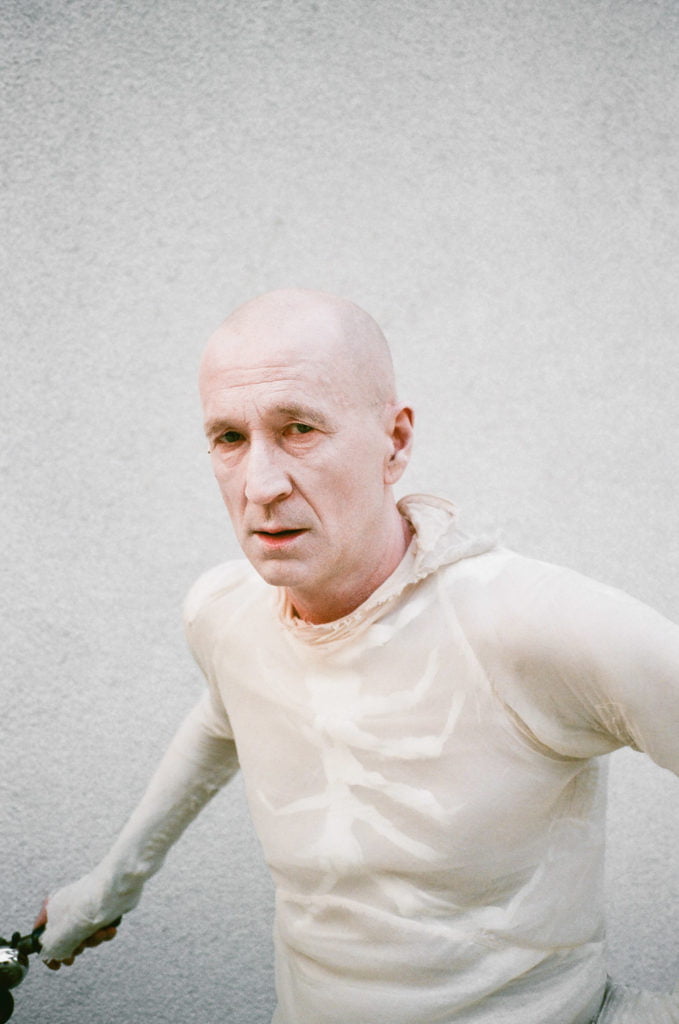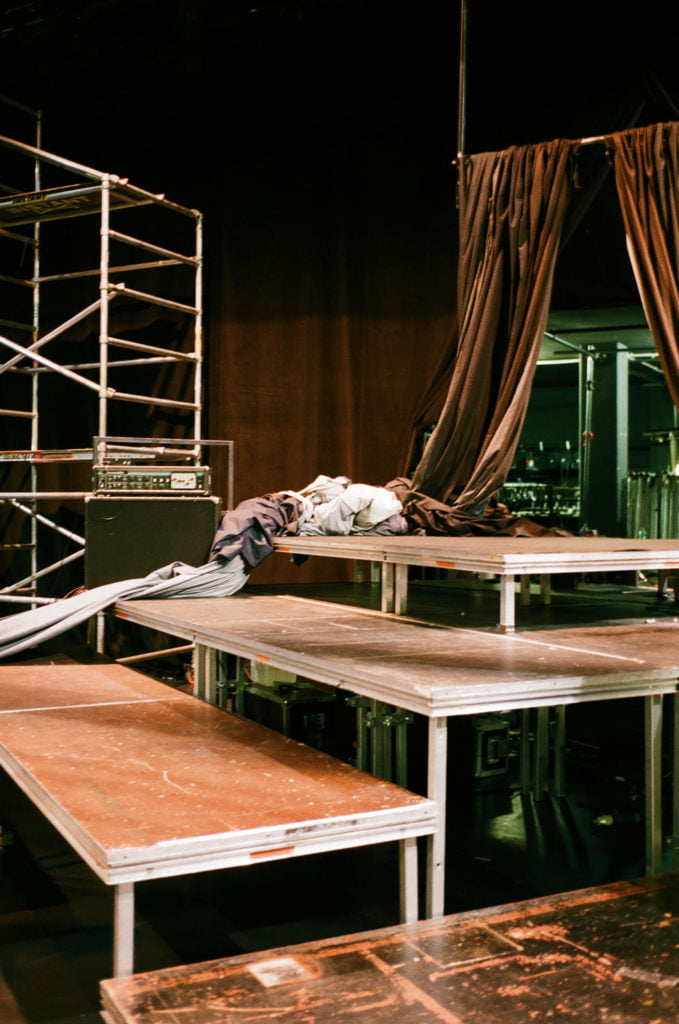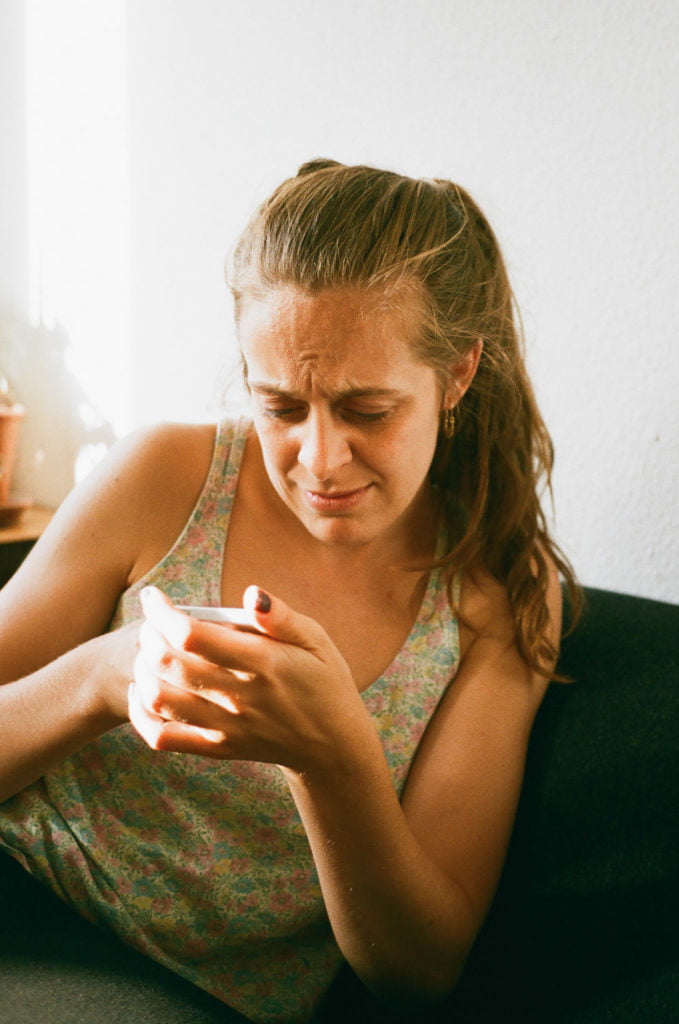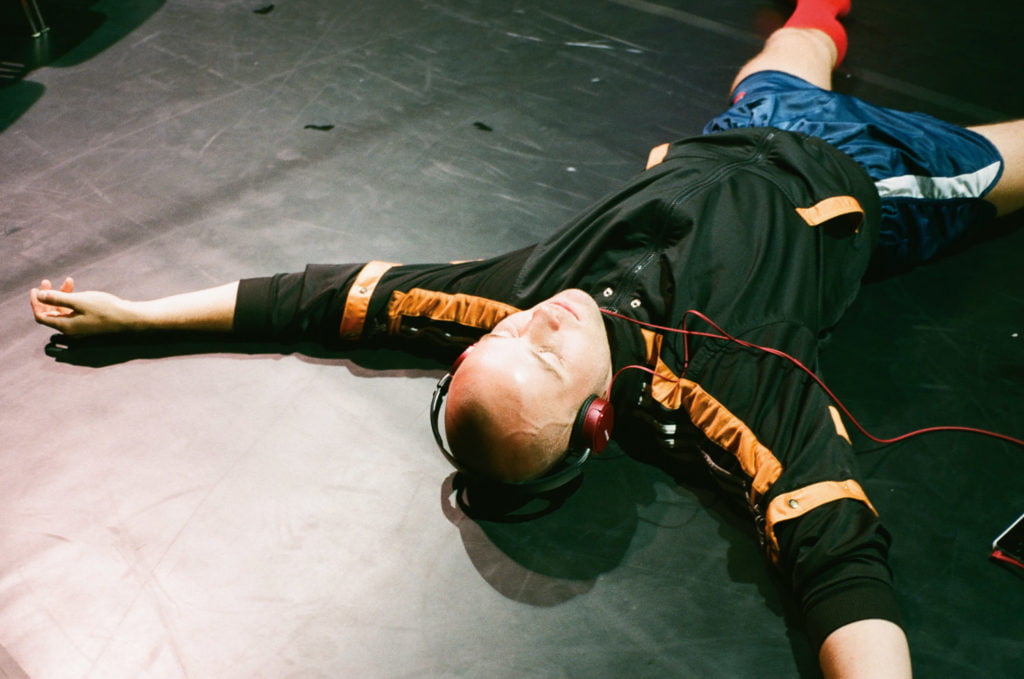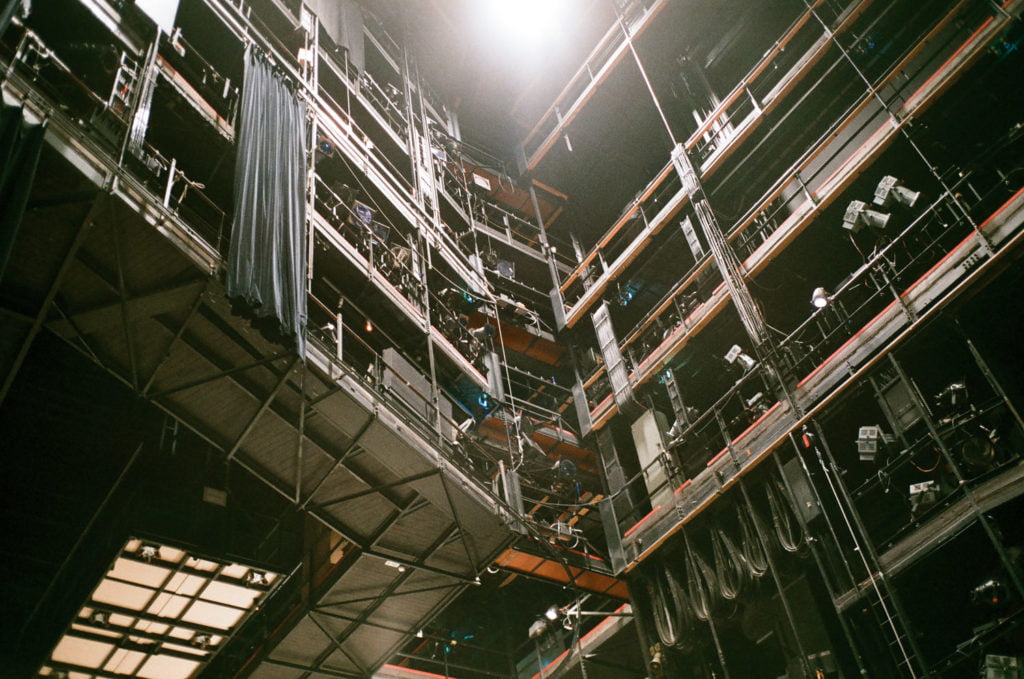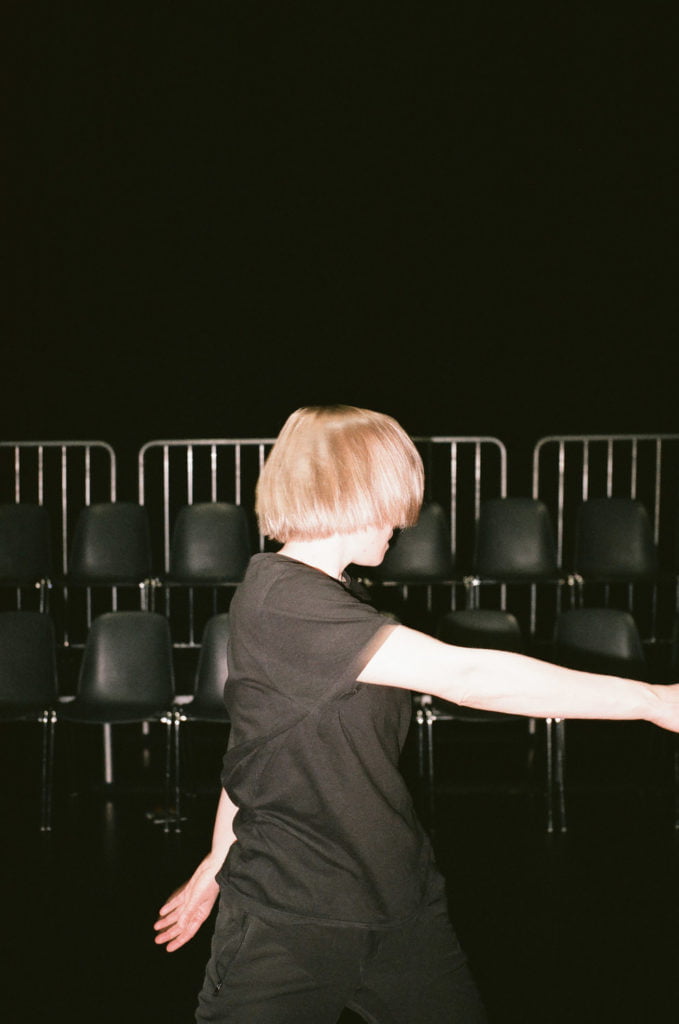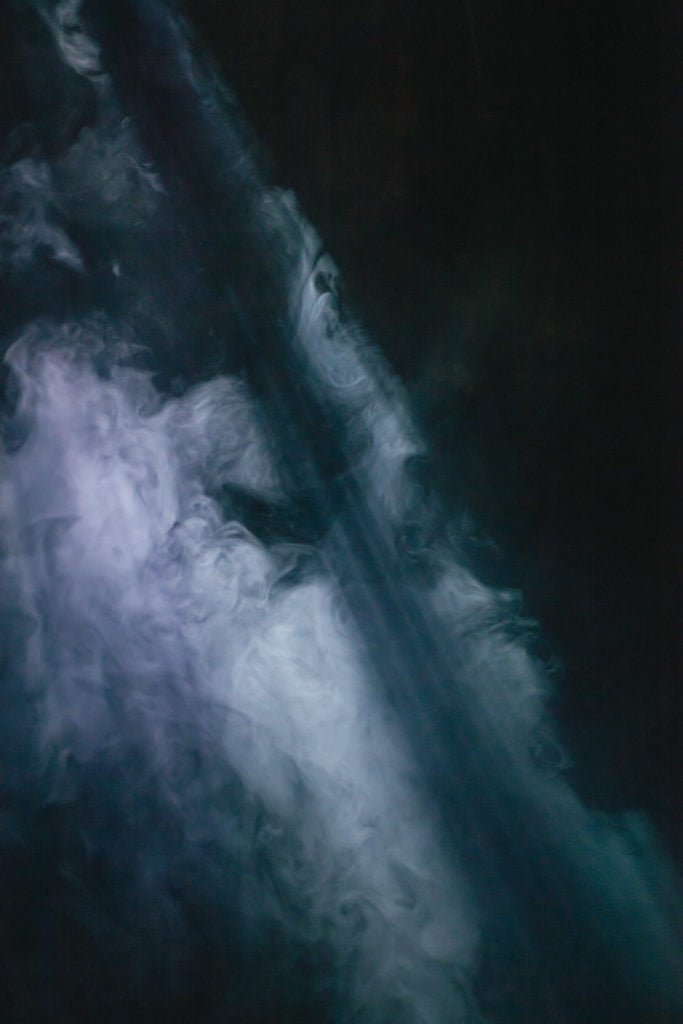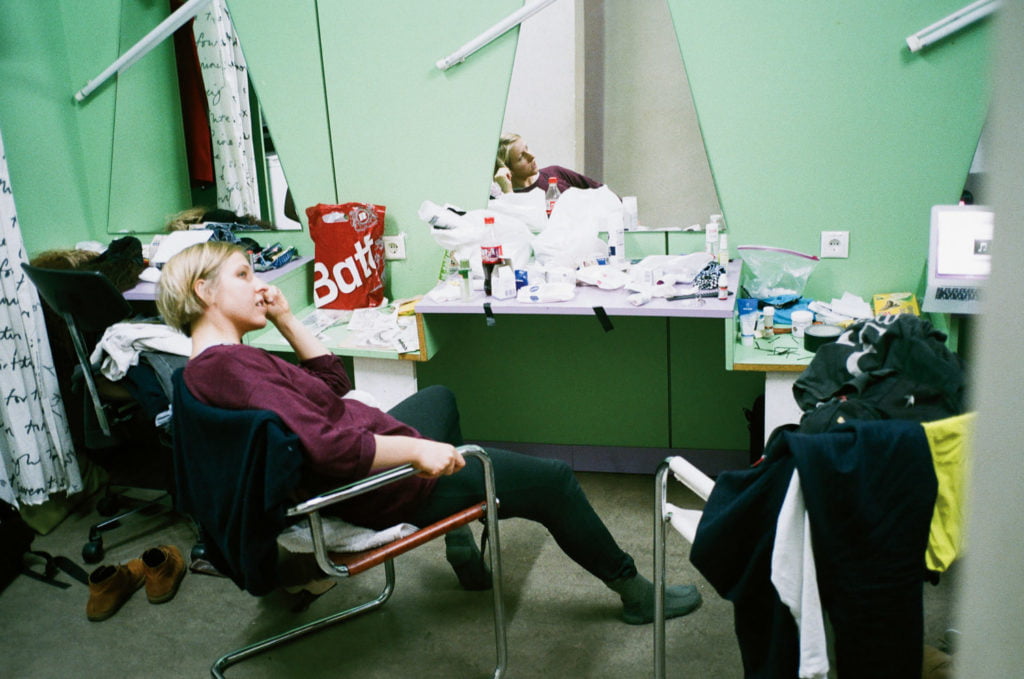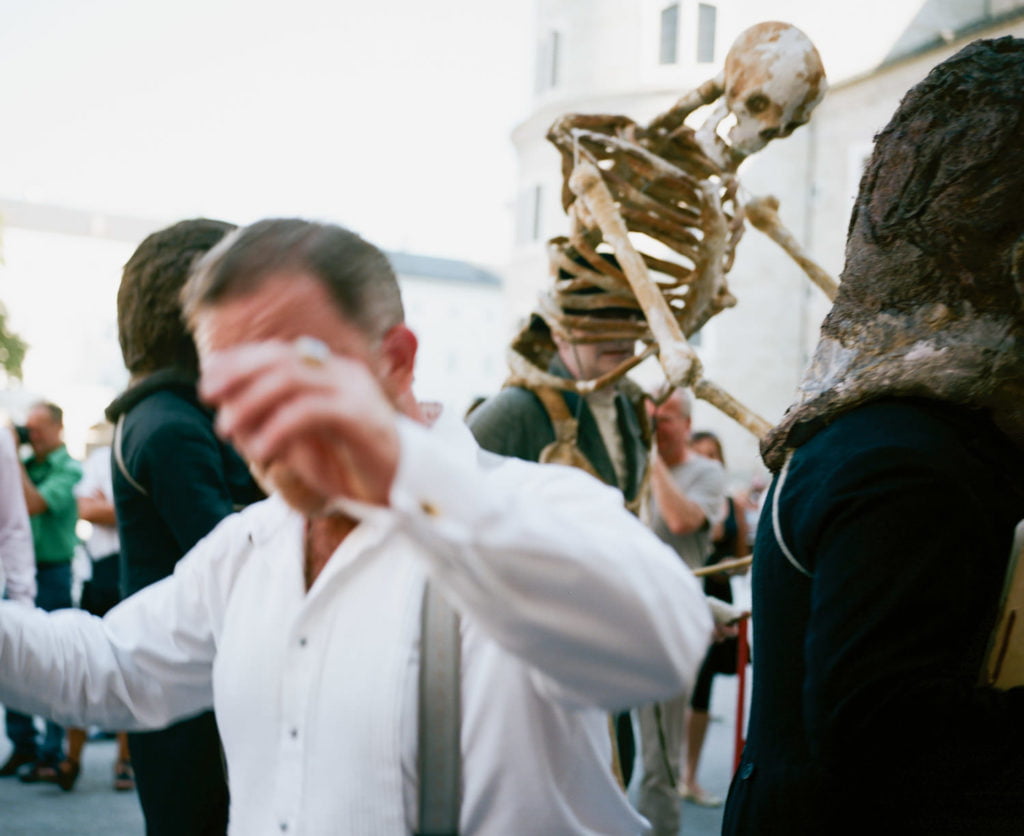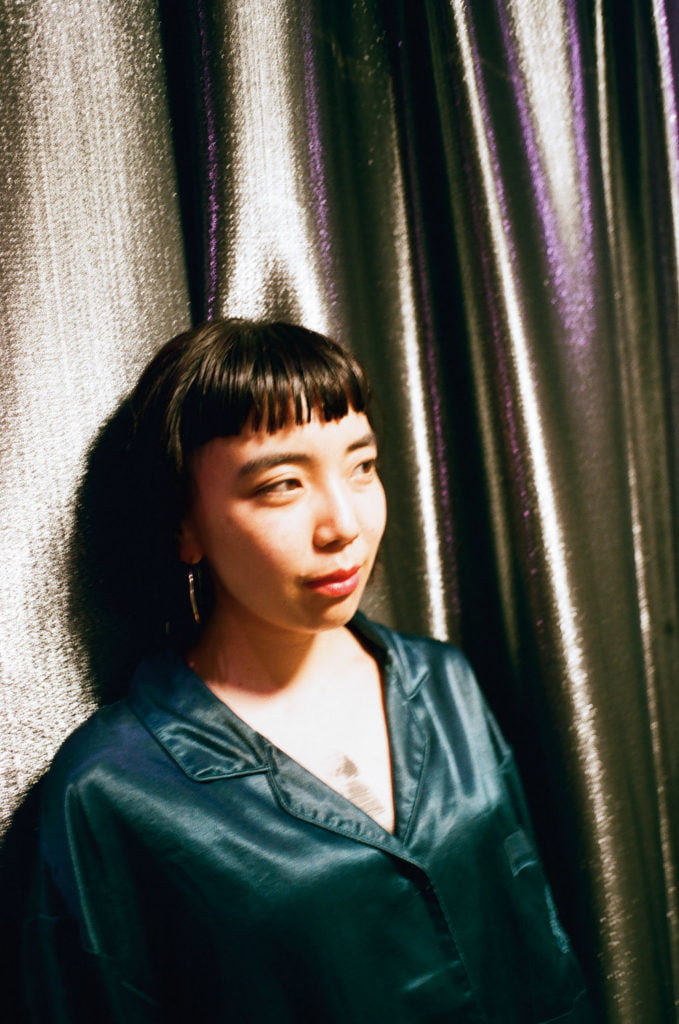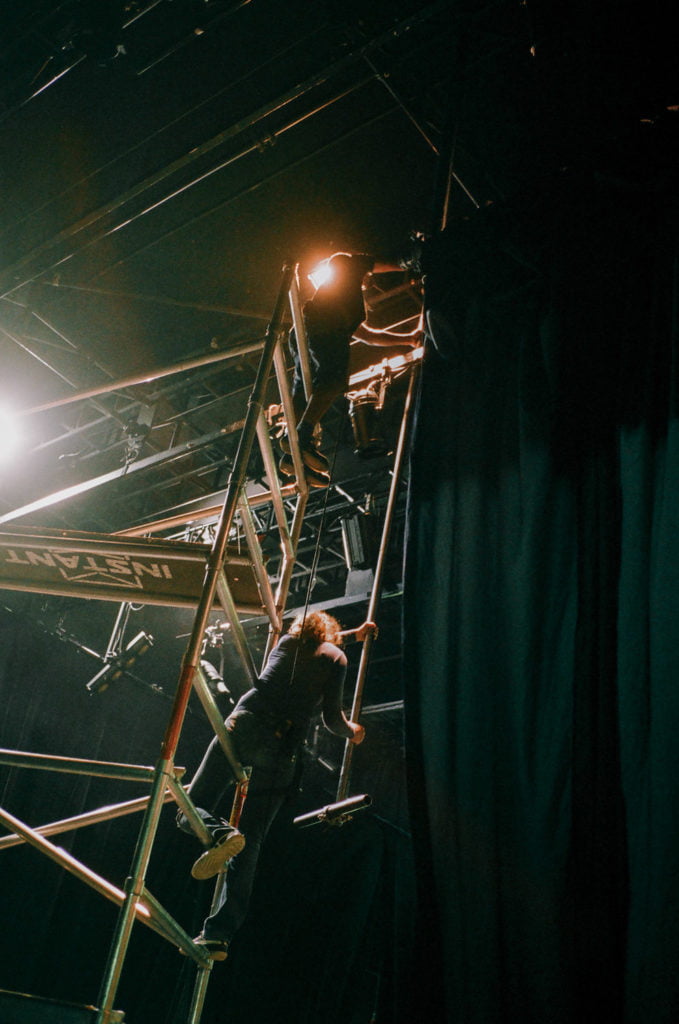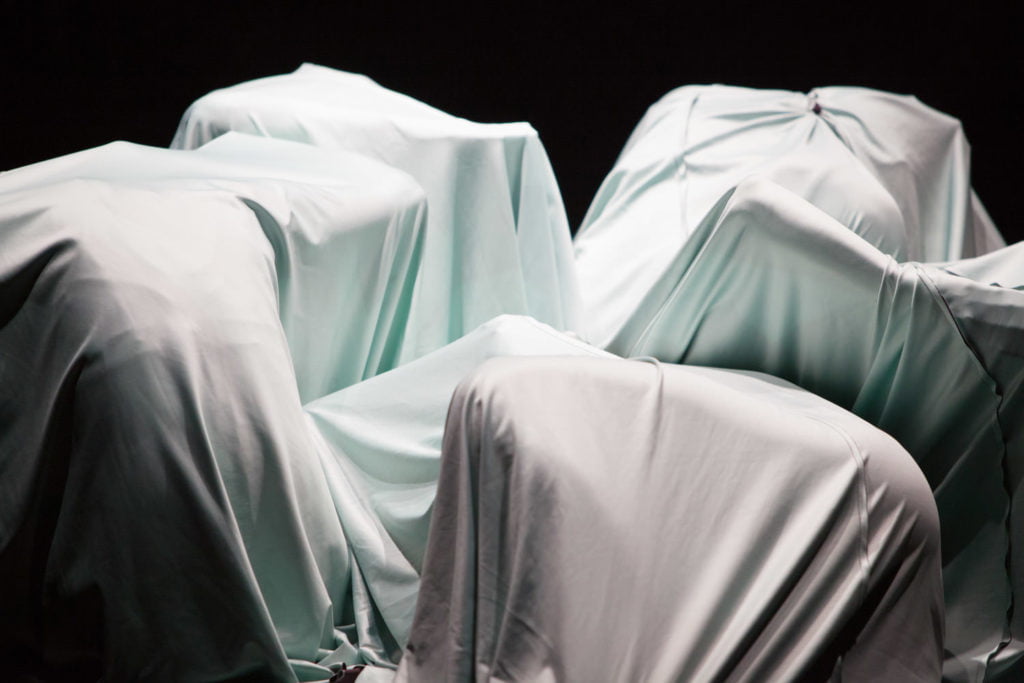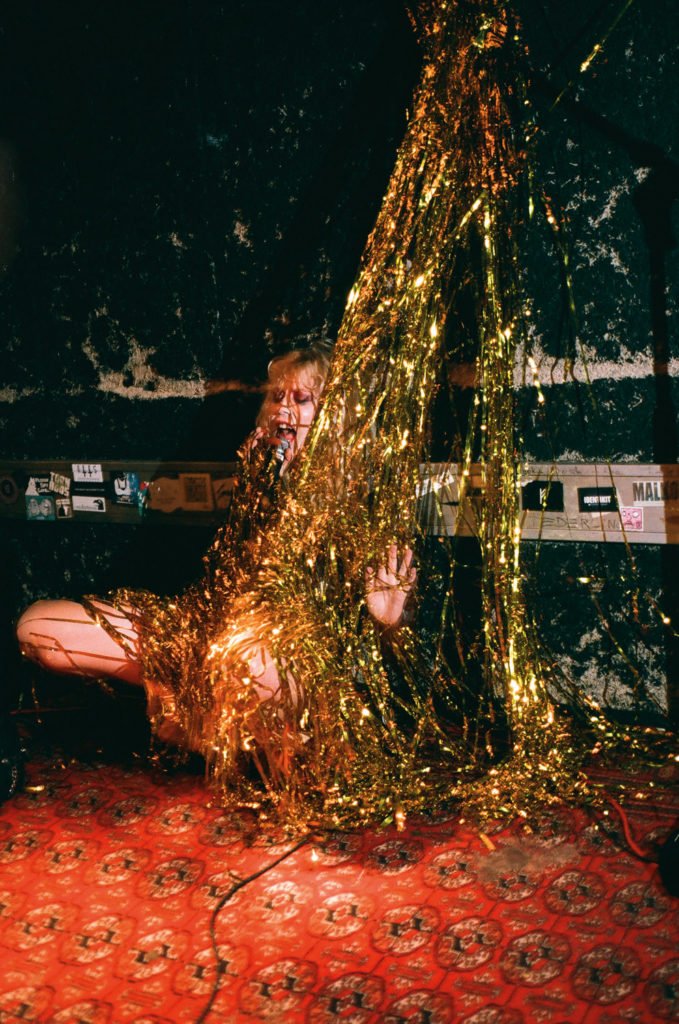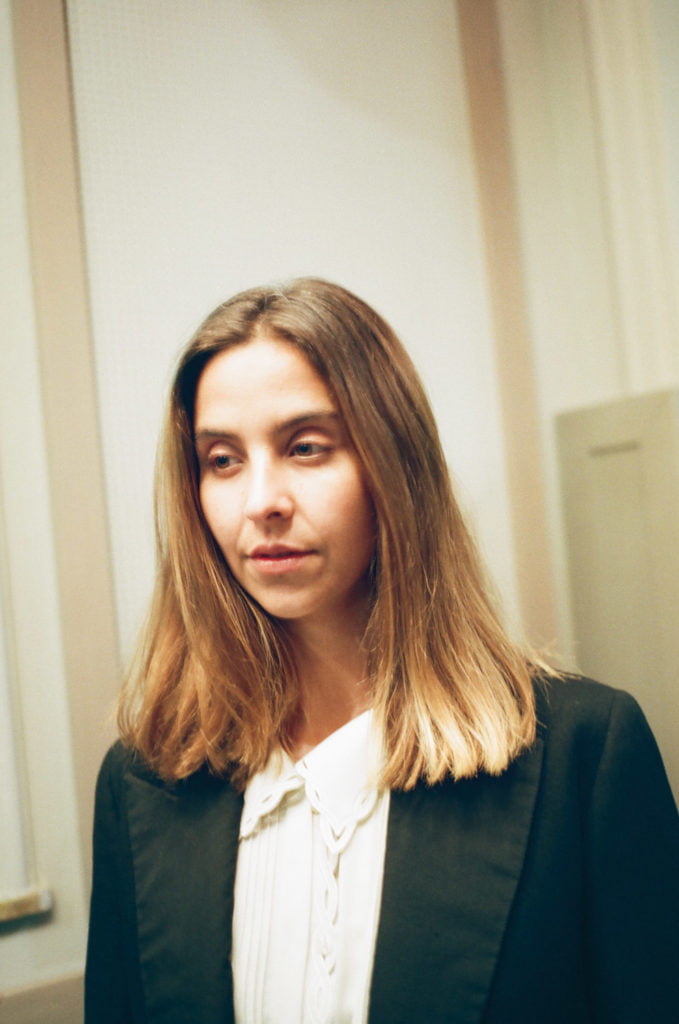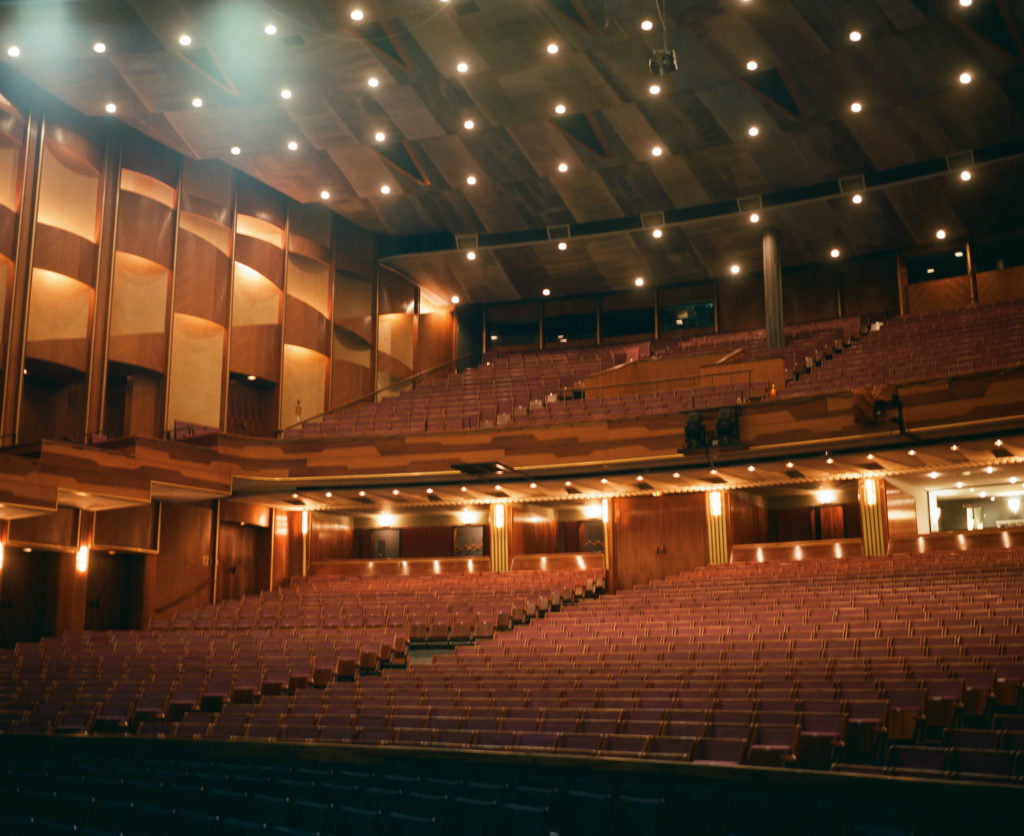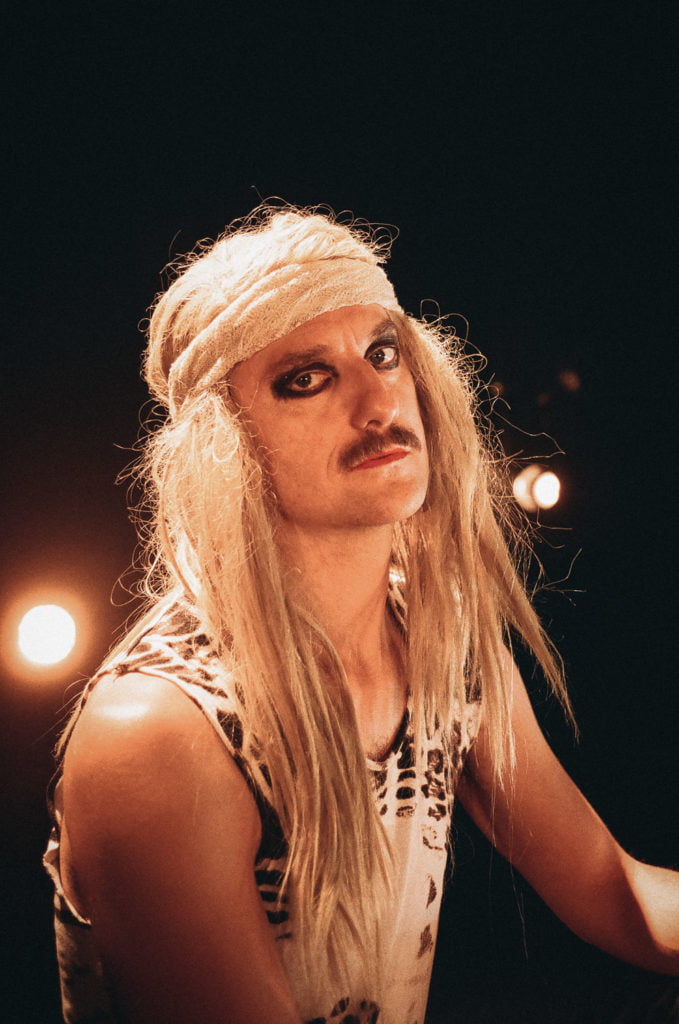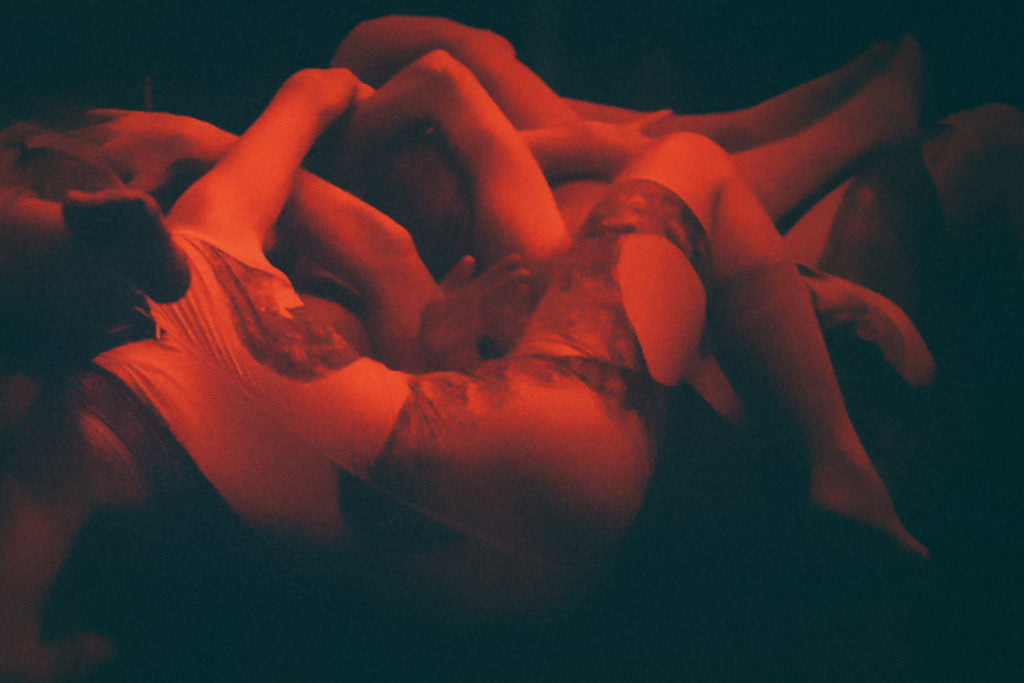Clara Wildberger
Stages
Festival time is a time of suspension of disbelief. Venues are revived and re-animated by audiences and artists alike. For my contribution I attended festivals throughout Austria that included the Salzburg Festival, the steirischer herbst, and the Elevate.
In my work I document the spaces between the dream and the public sphere, the stage setup, the rehearsals and the (self-)organisation that otherwise remain hidden from the festival-goers’ view. As actors and performers stroll from one stage to the next, the festival apparatus remains consistent.
Clara Wildberger
Thanks to: Michael Mauracher, Rainer Iglar, Fotohof (Team), Christine Frisinghelli, Marlene Leberer, The Loose Collective, Veza Fernandez, State (Team), Heide Oberegger, Katharina Wiesler, Norman Palm, David Višnjić, Sandra Steh, Patrick Wurzwallner
Clara Wildberger, born 1989 in Berndorf near Vienna; studied photography and Information Design at the University Joanneum in Graz. Currently living and working as photographer and film maker in Graz.
www.clarawildberger.com
Clara Wildberger has called her contribution to the ÖsterreichBilder/FacingAustria project Stages. The invitation, in a nutshell, was to contribute to the country’s multi- faceted image of itself with a documentary photo essay in the broadest sense of the word. So Wildberger chose Austria’s cultural life as her main theme. Indeed, in Austria, festivals are a much-used social contact zone and, as staged events of presentation, performance and display, they lead the parade of exchange and adoption rituals between the arts and the public. Likewise, festivals cannot escape the contention that they, too, define the state of the art: after all, they take pride of place in the economy of exchange and are communicated and marketed as important events.
Wildberger gave careful consideration to the venues she selected. Her photographs were taken during 2016 at the production sites of Austrian festivals, referencing a broad spectrum of artistic projects: for instance the dance theatre production entitled State by Norwegian choreographer Ingri Fiksdal or events staged as part of the club panamur at the steirischer herbst festival; Jedermann (Everyman) at the Salzburg Festival; On Earth by The Loose Collective; and The Father Care Piece Piece, a co-production by the Freischwimmer Festival in Vienna. While Jedermann has been a paragon of ritualised festival performances firmly anchored within the bourgeois cultural life since the 1920s, the steirischer herbst (since 1968) and Elevate (since 2005) festivals definitely place contemporary artistic production in the discursive context of current socio-political, philosophical and ecological issues.
Festivals represent a platform on which a current artistic production is to be showcased and made perceivable, but also consumable by the (largest possible) audience. In this sense festivals are always also about politics as here the demands of cultural-political representation collide in the public and media space with the fragile, vulnerable results of artistic work. To counter commercially successful events perceived as representative from a cultural-political perspective and exploitable from a tourism point of view with a concept where experience and exchange take the place of contemplation or consumption requires defending a notion of event that sees it precisely as non-communicable in media terms.
That, definitely, may have been one of the issues Wildberger was keen to explore in addressing her topic. The title of her work – Stages – is certainly in keeping with that idea: stages are after all the venues where protagonists perform. But besides describing the actual locations – as a podium, theatre stage, setting or platform – the term also has a temporal connotation in the sense of phases, states, and stages: On or indeed in these ‘stages’ Wildberger portrays people who can be or could be actors, participants, stagehands, but also spectators. We the viewers are not the ones addressed here.
We see them lost in thought, for the most part introspective, in readiness perhaps for their grand entrance, outside any events on stage. Similarly, the photographs of stages and other spaces do not give us an insight into a scene or a backdrop onto which we might project a scenario.
Wildberger’s images do not therefore document an event that stands out by virtue of a highlight within the goings-on and visually through the all too dramatic constellations of actor and stage scenery; rather, that event is characterised by duration, not to say determined by dead time: ‘An event cannot be separated from dead time. That time, the dead time, is part of the event […]; we are spectators of something that remains in abeyance for a very time, something that does not yet exist. The media cannot capture the event, but art can. […] The most ordinary event casts us as visionaries, whereas the media turn us into mere passive onlookers, or worse still, voyeurs.[ref]Gilles Deleuze, Pourparlers, 1972–1990, Les Editions de Minuit 2003.[/ref]
Christine Frisinghelli, born in Graz in 1949; curator and author; Organization of “Symposia on Photography” in cooperation with Manfred Willmann; 1980 co-founder of the journal Camera Austria International, chief editor until 2010; 1995–1999 director of the festival steirischer herbst; since 2001 custodian of the photo archive Pierre Bourdieu; lives in Graz.
